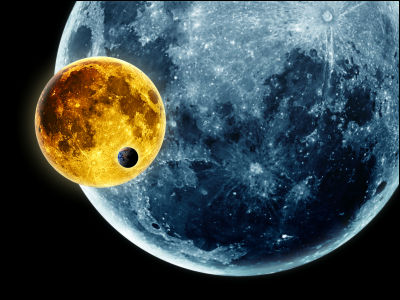NASA plans to develop 'lunar time zones' by the end of 2026 in preparation for future lunar missions

The National Aeronautics and Space Administration (NASA) is currently working on the
White House Office of Science and Technology Policy Releases Celestial Time Standardization Policy | OSTP | The White House
https://www.whitehouse.gov/ostp/news-updates/2024/04/02/white-house-office-of-science-and-technology-policy-releases-celestial-time-standardization-policy/

Exclusive: White House directs NASA to create time standard for the moon | Reuters
https://www.reuters.com/science/white-house-directs-nasa-create-time-standard-moon-2024-04-02/
Moon Standard Time? Nasa to create lunar-centric time reference system | Nasa | The Guardian
https://www.theguardian.com/science/2024/apr/02/moon-nasa-coordinated-lunar-time
NASA to create a new time zone for the moon by 2026 | Live Science
https://www.livescience.com/space/space-exploration/nasa-to-create-a-new-time-zone-for-the-moon-by-2026
In an April 2 memo (PDF) sent to NASA, OSTP Administrator Arati Prabhakar instructed the agency to work with other U.S. government agencies to develop ' Coordinated Lunar Time (LTC) ' by the end of 2026.
Due to the Moon's less gravitational field, time passes an average of 58.7 microseconds faster per day than on Earth. At first glance, this may not seem like a big difference, but lunar exploration missions require extremely high precision, so it is important to establish Coordinated Lunar Time to provide a timing benchmark for lunar probes and satellites.
'The same clocks on Earth will run at a different rate on the Moon,' said Kevin Coggins, NASA's space communications and navigation program manager. 'Think of the atomic clocks at the U.S. Naval Observatory . They're the pulse of the nation, keeping everything in sync. We'd want the Moon to have its own pulse.'
OSTP officials told Reuters that without a unified lunar standard time, it would be difficult to ensure the security of data communications between spacecraft and to synchronize communications between Earth and lunar satellites, lunar bases and astronauts. In addition, if the time is not unified, it could lead to errors in mapping the lunar surface and lunar orbit, as well as in locating positions. 'Imagine how disruptive it would be and how difficult it would be to live daily life if the world did not synchronize its clocks to the same time,' said an OSTP official.

On Earth, most clocks and time zones are based on Coordinated Universal Time (UTC) , which is calculated by averaging the time of atomic clocks in various locations around the world . It is possible that establishing UTC would require the deployment of atomic clocks on the moon.
NASA's Artemis program aims to send astronauts into lunar orbit in 2025 and successfully land a crewed manned lunar surface in 2026. 'All space-based nations will benefit from U.S. leadership in defining appropriate standards to achieve the precision and resilience required to execute missions in the hostile lunar environment,' the OSTP memo states.
In order to establish a standardized lunar time, an international agreement would be required through existing standards organizations and the 36 nations that participate in the Artemis Accords, which Russia and China, which compete with the United States in space development, have not signed.
The Artemis program is also being coordinated to have two Japanese astronauts land on the moon after 2028.
Two Japanese to land on the moon in 'Artemis Project' after 2028...Japan and US governments agree: Yomiuri Shimbun
https://www.yomiuri.co.jp/politics/20240316-OYT1T50176/
Related Posts:
in Science, Posted by log1h_ik







